Simulation and Experiment of Manufacturing Process for Structural Aluminum Parts with Hard to Plastic Forming
Abstract
:1. Introduction
2. Materials and Process Design for Plastic Working
2.1. Design of Plastic Working
2.2. Materials and Methods
2.2.1. Hot Extrusion
2.2.2. Warm Forging
2.3. Measurement of Microstructures and Mechanical Properties
3. Simulation for Plastic Working
3.1. Simulation Condition
3.1.1. Hot Extrusion
3.1.2. Warm Forging
3.2. Simulation Results
3.2.1. Hot Extrusion
3.2.2. Warm Forging
4. Experiment for Plastic Working
4.1. Experimental Condition
4.2. Experimental Results
4.2.1. Forming Experiment
4.2.2. Microstructures and Mechanical Properties
5. Conclusions
- (1)
- A blocker produced by applying the extrusion condition of hot extrusion at 450 °C under the extrusion speed at 6 mm. The forming load required by simulation results was found to be 1019 ton. While, the forming load was measured as 1210 ton in the experiment.
- (2)
- The warm forging process for embossing forming was adopted at 260 °C under the speed at 150 mm/s. The forming load required by simulation results was found to be 534 ton as compared with the load 600 ton in the experiment. From the experiment and simulation results, appearance from the two approaches is almost the same.
- (3)
- The microstructure of the produced part showed big differences in the extruded portion and forged portion. The extruded portion was elliptical where the α-Al phase were elongated towards extrusion direction, while α-Al phase were nearer to circle in the forged portion due to shape deformation by the compression.
- (4)
- The tensile strength and elongation were 345 MPa and 12%, respectively. The Vickers hardness at the extruded portion was found as 105 HV, while it was above 110 HV in the forged part.
Author Contributions
Acknowledgments
Conflicts of Interest
References
- American Society for Metals. Metals Handbook. Volume 4: Forming, 8th ed.; ASM International: Geauga County, OH, USA, 1969; pp. 379–402. [Google Scholar]
- Angella, G.; Di Schino, A.; Donnini, R.; Richetta, M.; Testani, C.; Varone, A. AA7050 Al Alloy Hot-Forging Process for Improved Fracture Toughness Properties. Metals 2019, 9, 64. [Google Scholar] [CrossRef]
- Maizza, G.; Pero, R.; Richetta, M.; Montanari, R. Continuous dynamic recrystallization (CDRX) model for aluminum alloys. J. Mater. Sci. 2018, 53, 4563–4573. [Google Scholar] [CrossRef]
- Mostafaei, M.A.; Kazeminezhad, M. Hot deformation behavior of hot extruded Al–6Mg alloy. Mater. Sci. Eng. A 2012, 535, 216–221. [Google Scholar] [CrossRef]
- Fu, M.W.; Young, M.S.; Tong, K.K.; Danno, A. Design solution evaluation for metal forming product development. Int. J. Adv. Manuf. Technol. 2008, 38, 249–257. [Google Scholar] [CrossRef]
- Zhou, J.; Li, L.; Duszczyk, J. 3D FEM simulation of the whole cycle of aluminum extrusion throughout the transient state and the steady state using the updated Lagrangian appach. J. Mater. Process. Technol. 2003, 134, 383–397. [Google Scholar] [CrossRef]
- Duan, X.L.; Velay, X.; Sheppard, T. Application of finite element method in the hot extrusion of aluminium alloys. Mater. Sci. Eng. A 2004, 369, 66–75. [Google Scholar] [CrossRef]
- Minamia, A.; Marumob, Y.; Saiki, H.; Ruanb, L.; Shizuma, O. Effects of simulation conditions on evaluation of tool temperature in hot extrusion-forging. J. Mater. Process. Technol. 2000, 177, 251–255. [Google Scholar] [CrossRef]
- Altan, T.; Vazquez, V. Numerical Process Simulation for Tool and Process Design in Bulk Metal Forming. CIRP Ann. 1996, 45, 599–615. [Google Scholar] [CrossRef]
- Jeswiet, J.; Geiger, M.; Engel, U.; Kleiner, M.; Schikorra, M.; Duflou, J.; Neugebauer, R.; Bariani, P.; Bruschi, S. Metal forming progress since 2000. CIRP J. Manuf. Sci. Technol. 2008, 1, 2–17. [Google Scholar] [CrossRef] [Green Version]
- Jabbari Taleghani, M.A.; Ruiz Navas, E.M.; Torralba, J.M. Microstructural and mechanical characterisation of 7075 aluminium alloy consolidated from a premixed powder by cold compaction and hot extrusion. Mater. Des. 2014, 55, 674–682. [Google Scholar] [CrossRef] [Green Version]
- Prabhu, R.; Ganapathy, T.; Venkatachalapathyc, V.S.K. Process Parameters Optimization on Porthole-Die Hot Extrusion of Aluminium Alloy Tubes Using Taguchi Method. Int. J. Mech. Mater. Eng. 2011, 6, 102–108. [Google Scholar]
- Rokni, M.R.; Hanzaki, A.Z.; Roostaei, A.A.; Abolhasani, A. Constitutive base analysis of a 7075 aluminum alloy during hot compression testing. Mater. Des. 2011, 32, 4955–4960. [Google Scholar] [CrossRef]
- Fang, G.; Zhou, J.; Duszczyk, J. Extrusion of 7075 aluminium alloy through double-pocket dies to manufacture a complex profile. J. Mater. Process. Technol. 2009, 209, 3050–3059. [Google Scholar] [CrossRef]
- Hyoji, Y.; Katsuhisa, T. Precision forging of aluminum and steel. J. Mater. Process. Technol. 2000, 98, 196–204. [Google Scholar]






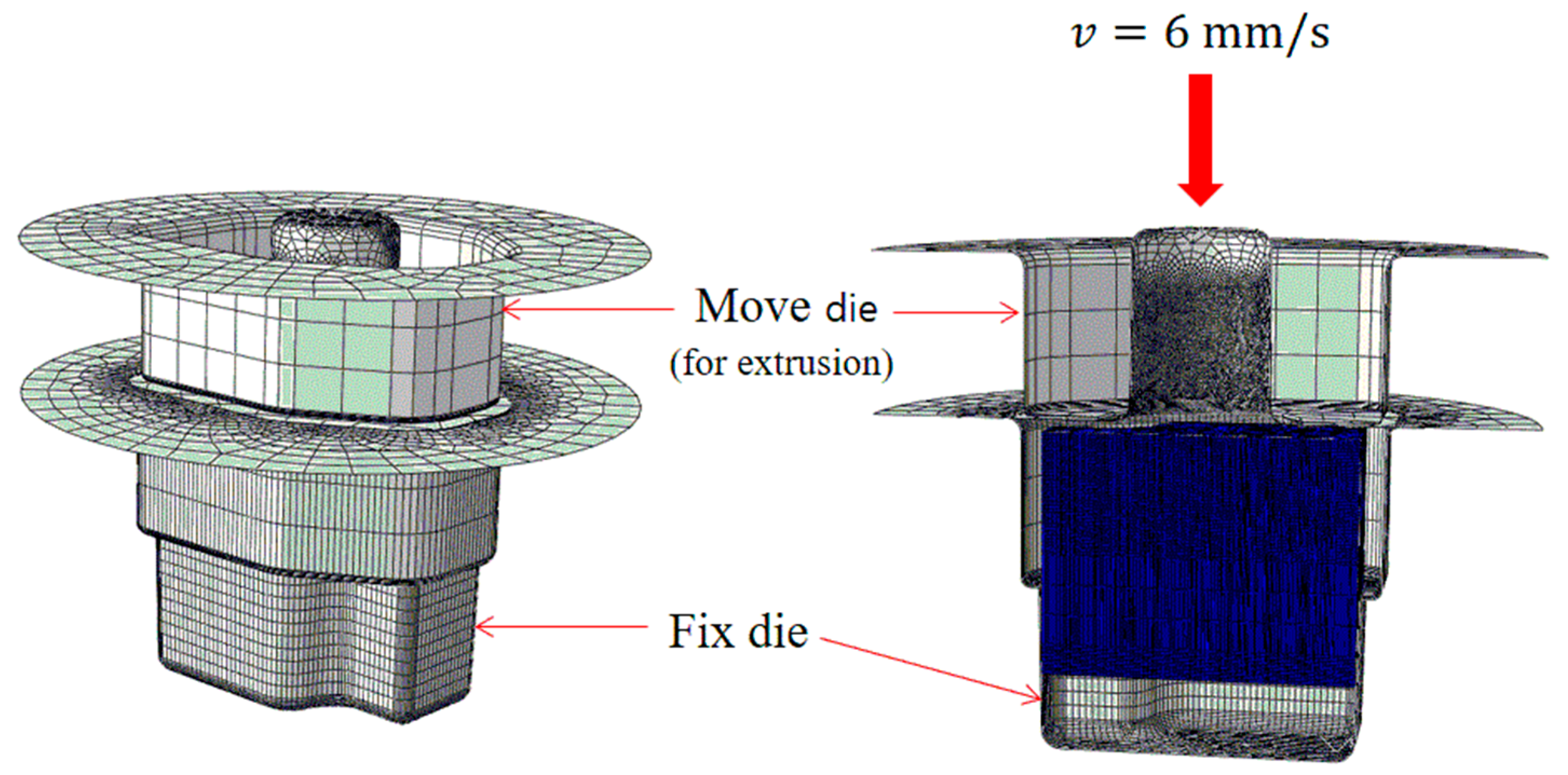
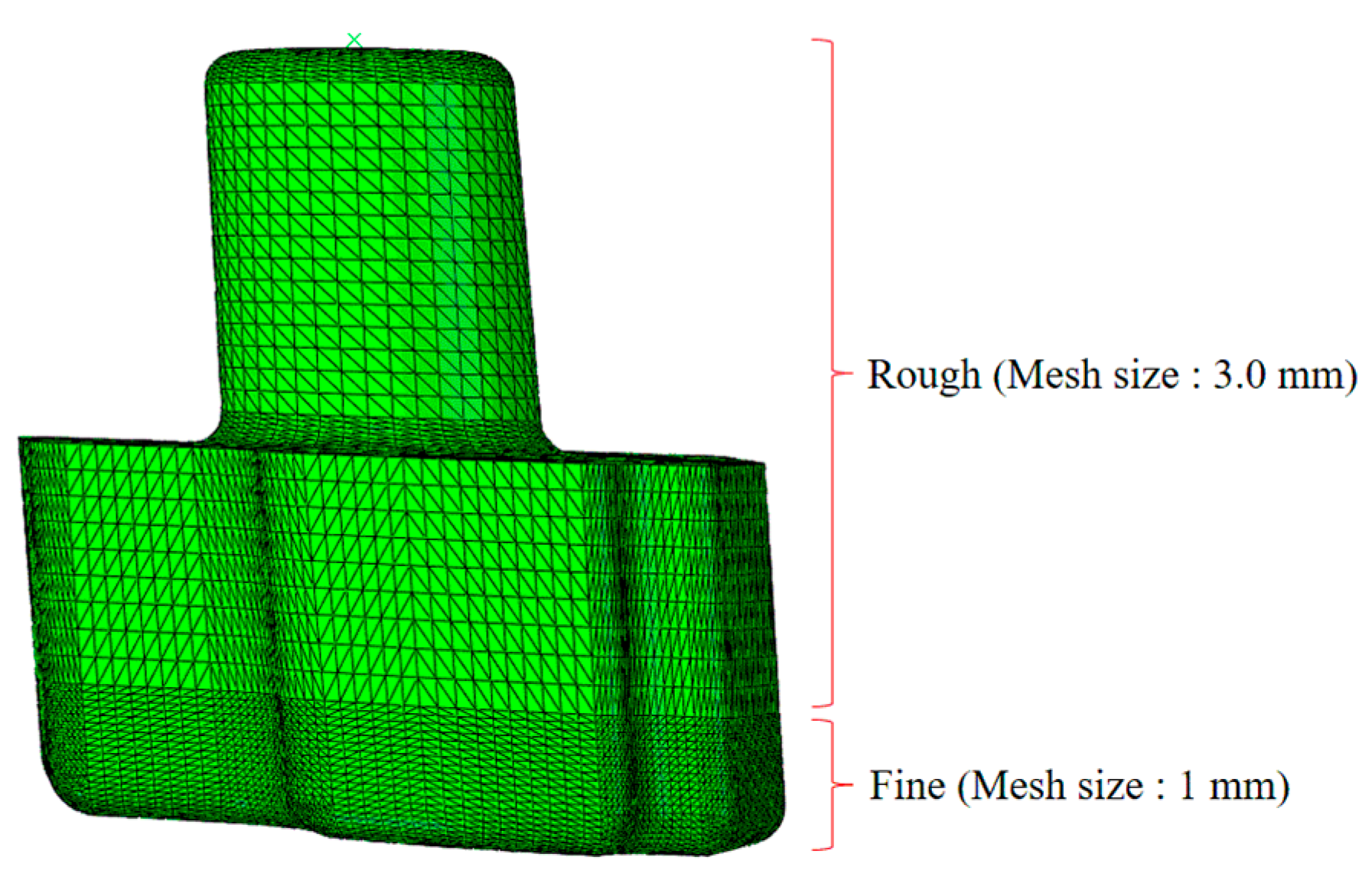
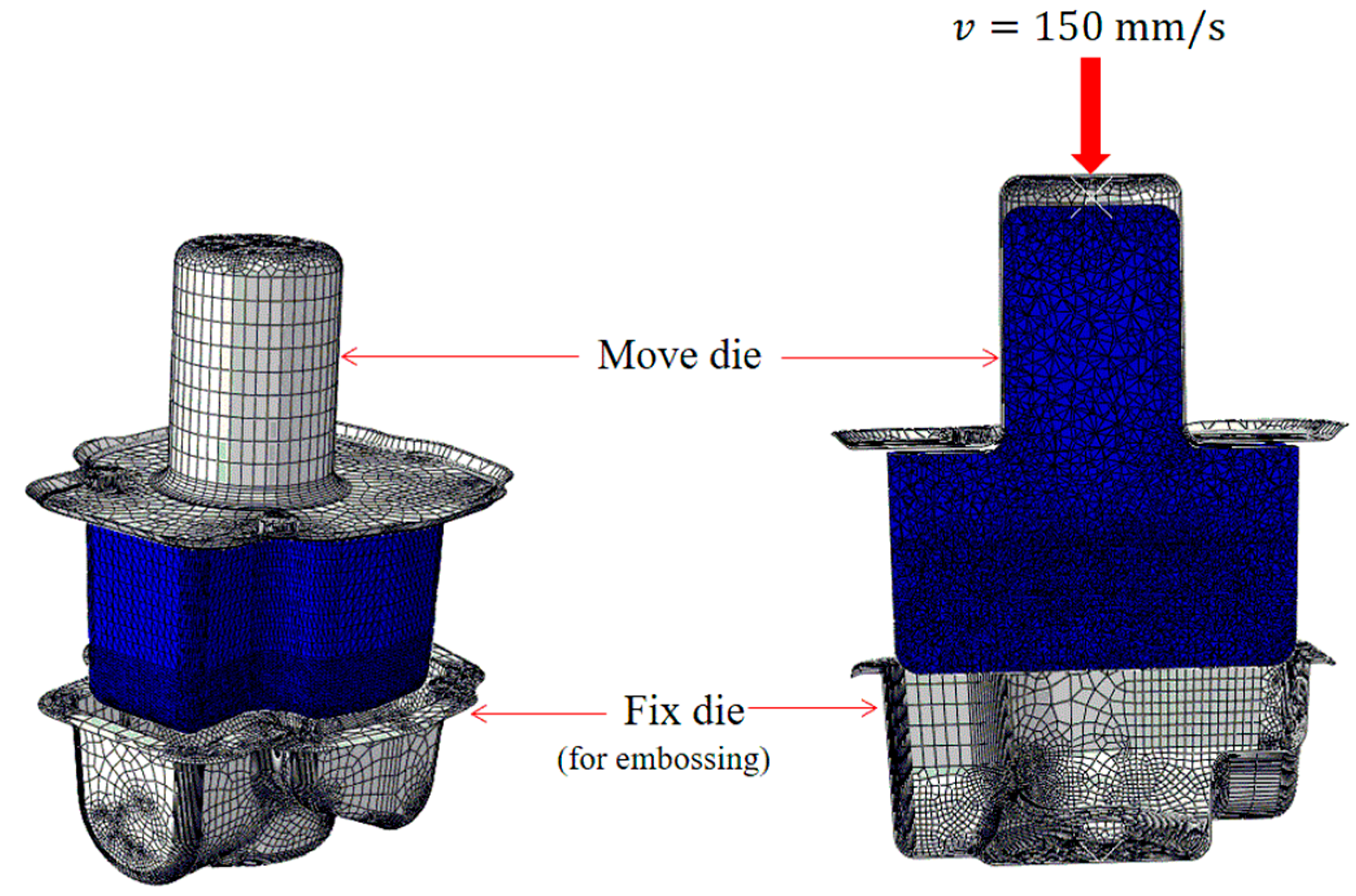


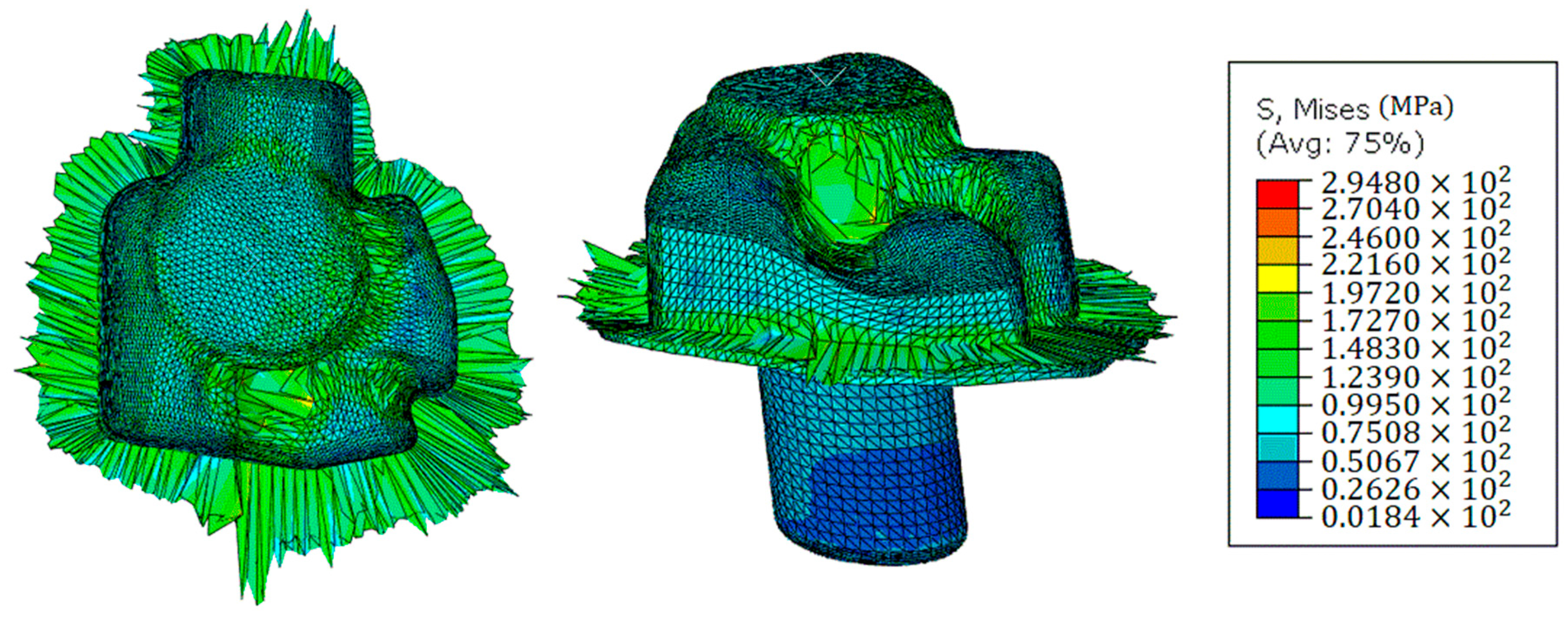

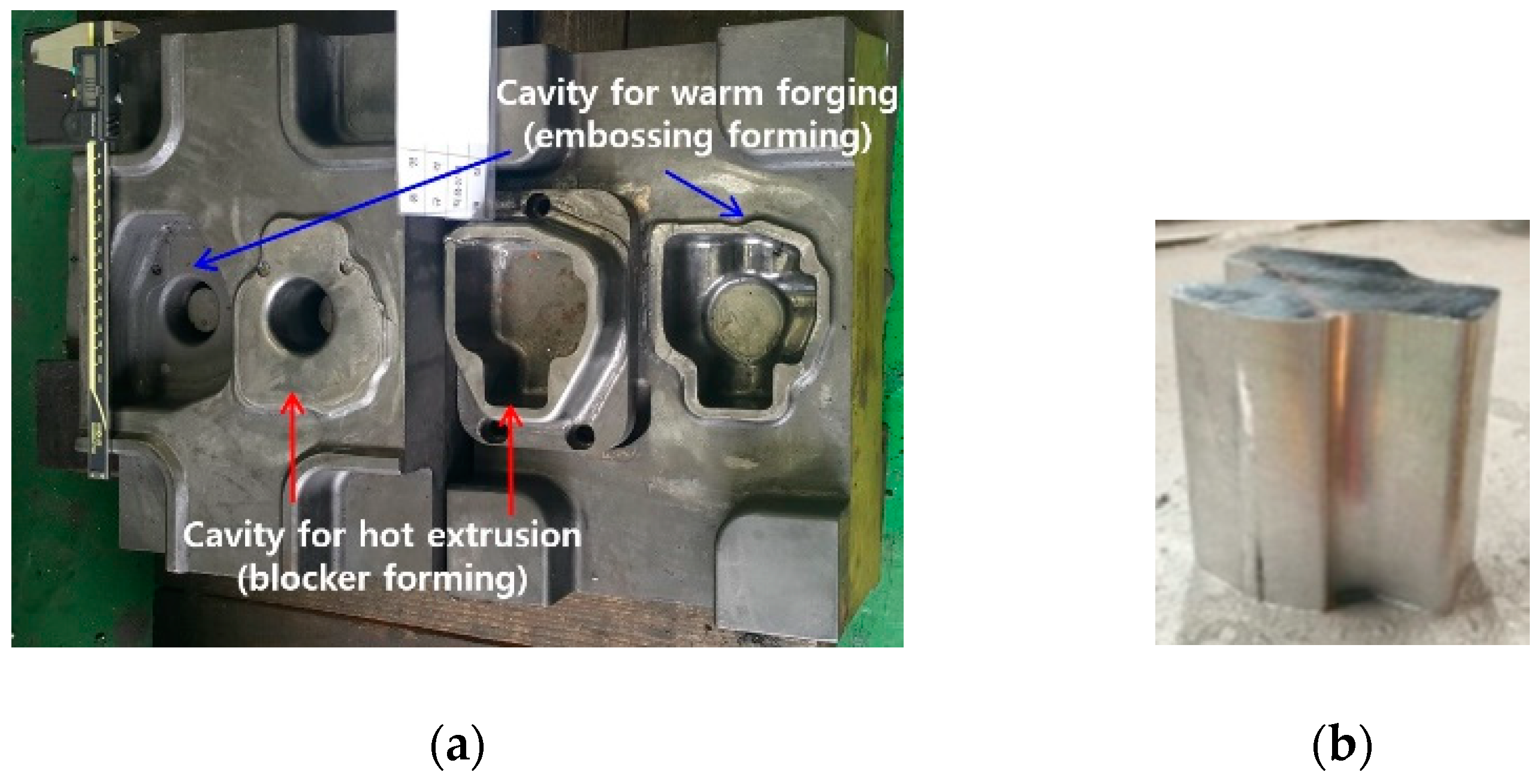



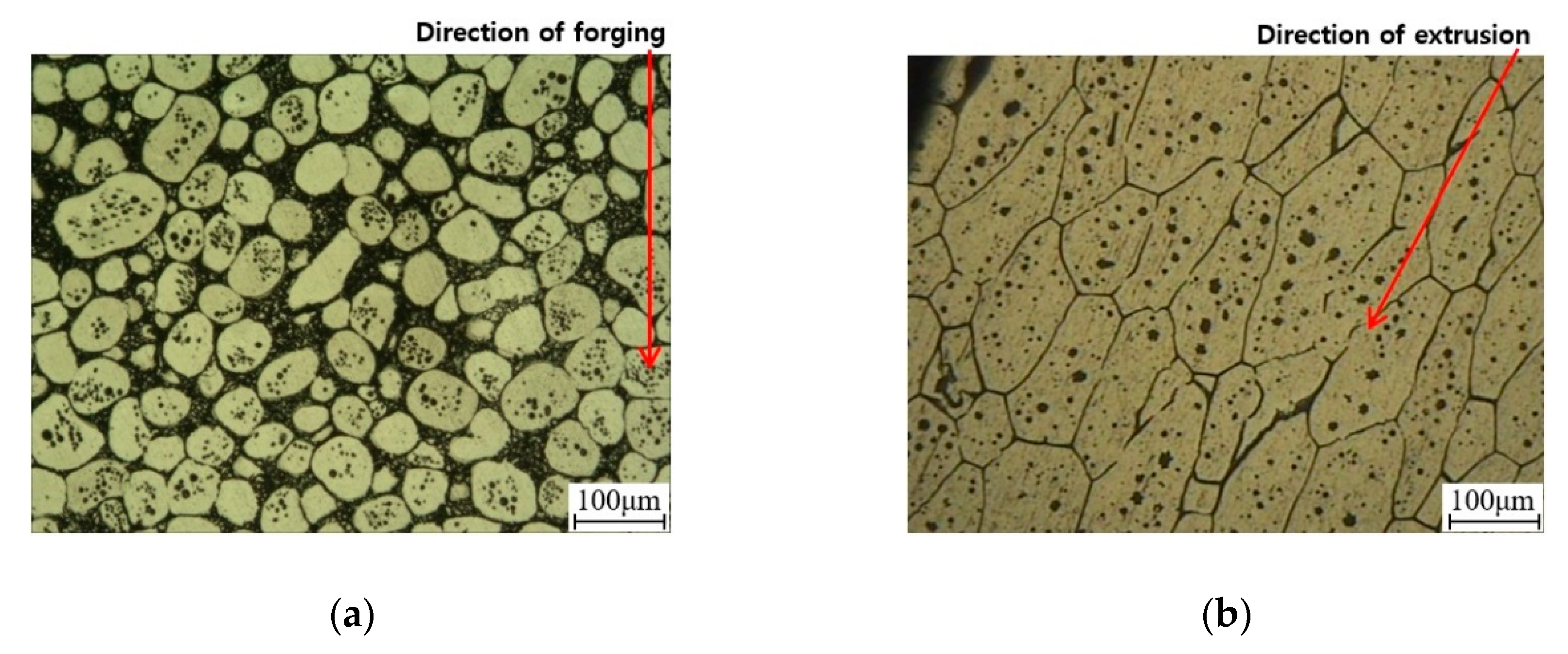
| Yield Strength | Tensile Strength | Elongation | ||||
|---|---|---|---|---|---|---|
| 290 ± 6 MPa | 340 ± 8 MPa | 12 ± 2% | ||||
| Position | ① | ② | ③ | ④ | ⑤ | |
| Vicker’s hardness (HV) | 110 ± 3 | 112 ± 4 | 110 ± 3 | 111 ± 3 | 105 ± 2 | |
© 2019 by the author. Licensee MDPI, Basel, Switzerland. This article is an open access article distributed under the terms and conditions of the Creative Commons Attribution (CC BY) license (http://creativecommons.org/licenses/by/4.0/).
Share and Cite
Jin, C.K. Simulation and Experiment of Manufacturing Process for Structural Aluminum Parts with Hard to Plastic Forming. Metals 2019, 9, 207. https://doi.org/10.3390/met9020207
Jin CK. Simulation and Experiment of Manufacturing Process for Structural Aluminum Parts with Hard to Plastic Forming. Metals. 2019; 9(2):207. https://doi.org/10.3390/met9020207
Chicago/Turabian StyleJin, Chul Kyu. 2019. "Simulation and Experiment of Manufacturing Process for Structural Aluminum Parts with Hard to Plastic Forming" Metals 9, no. 2: 207. https://doi.org/10.3390/met9020207





